Published online by Cambridge University Press: 11 February 2009
The following suggestions for the interpretation of Parmenides and Melissus can be grouped for convenience about one problem. This is the problem whether, as Aristotle thought and as most commentators still assume, Parmenides wrote his poem in the broad tradition of Ionian and Italian cosmology. The details of Aristotle's interpretation have been challenged over and again, but those who agree with his general assumptions take comfort from some or all of the following major arguments. First, the cosmogony which formed the last part of Parmenides' poem is expressly claimed by the goddess who expounds it to have some measure of truth or reliability in its own right, and indeed the very greatest measure possible for such an attempt. Second, the earlier arguments of the goddess prepare the ground for such a cosmogony in two ways. For in the first place these arguments themselves start from assumptions derived from earlier cosmologists, and are concerned merely to work out the implications of this traditional material. And, in the second place, they end by establishing the existence of a spherical universe: the framework of the physical world can be secured by logic even if the subsequent introduction of sensible qualities or ‘powers’ into this world marks some decline in logical rigour.
page 84 note 1 Contra those who follow Bernays in identifying this, the second of the false paths denounced by the goddess, with the theories of Heraclitus, and so have to distinguish it from the unheraclitean cosmology expounded in the last part of the poem. This thesis led Burnet to identify the cosmology with the first false path (Early Greek Philosophy,4 pp. 183–4Google Scholar), though this path is the ‘wholly unintelligible’ line of sheer negation (B 2. 5): a preposterous equation that he did not try to make plausible. The second false path is the error not of Heraclitus but of all men: see the second section of this paper and Verdenius, Parmenides, app. J; Jaeger, , Theology of the Early Greek Philosophers, p. 101;Google ScholarKirk, , Heraclitus: the Cosmic Fragments, p. 211.Google Scholar To take this path is to suppose that to be and not to be are the same and not the same (B 6. 8–9: for the negative in  cf. B 8. 40, where it cannot be explained as oratio obliqua). Gregory Vlastos, to whom I am indebted for making me reinforce and reconsider my argument at some salient points, argues: ‘Those who deny any allusion to Heraclitus in Parmenides … have yet to explain why in these lines Parmenides should (a) impute to anyone the belief in the identity of being and not-being (rather than merely the belief in not-being, which is bad enough …) and (b) after saying
cf. B 8. 40, where it cannot be explained as oratio obliqua). Gregory Vlastos, to whom I am indebted for making me reinforce and reconsider my argument at some salient points, argues: ‘Those who deny any allusion to Heraclitus in Parmenides … have yet to explain why in these lines Parmenides should (a) impute to anyone the belief in the identity of being and not-being (rather than merely the belief in not-being, which is bad enough …) and (b) after saying 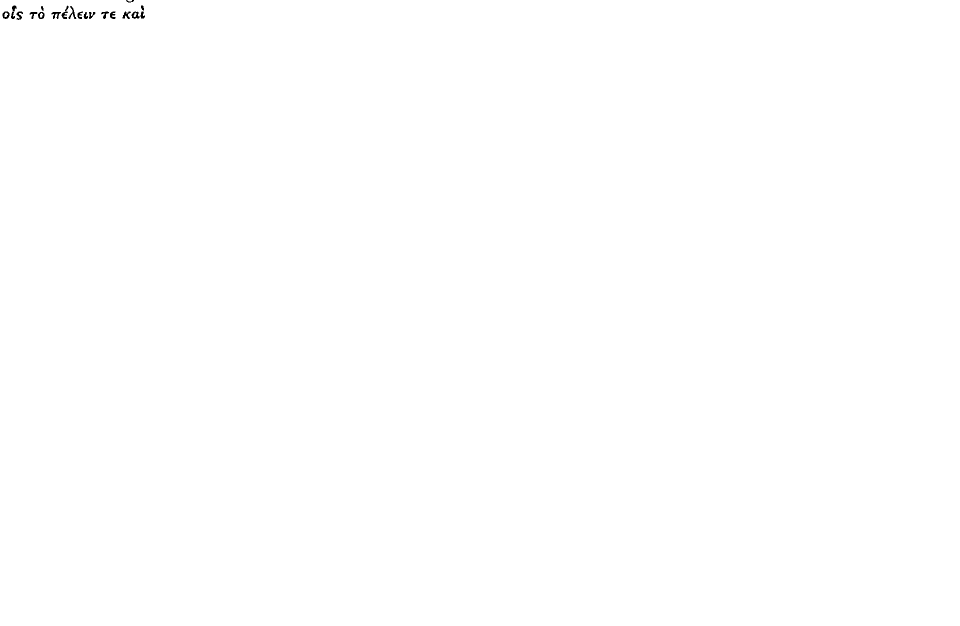
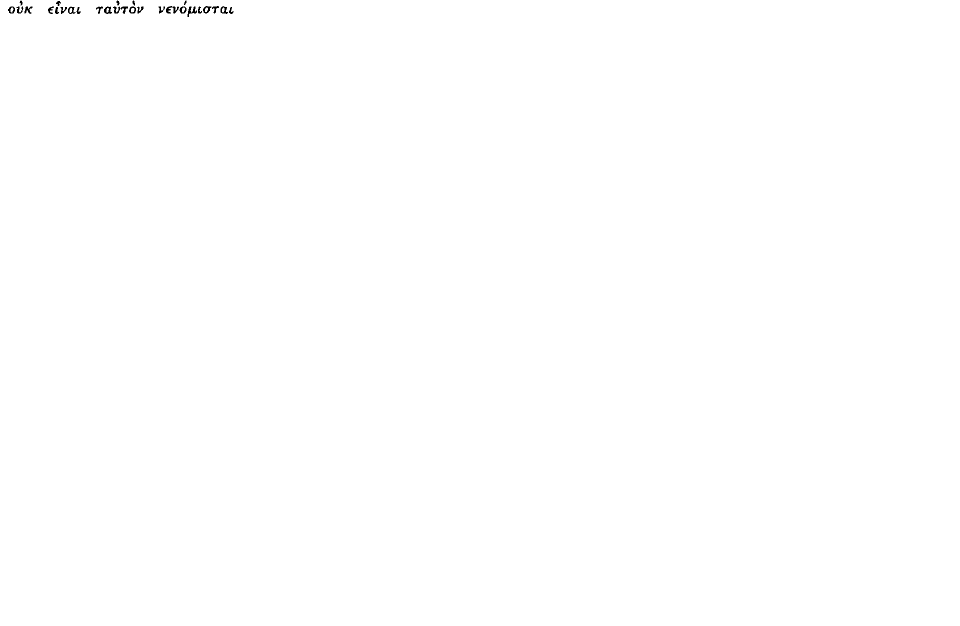 , which would be quite sufficient to make his point, should add maliciously
, which would be quite sufficient to make his point, should add maliciously  , producing the expression
, producing the expression  , which so strikingly parallels
, which so strikingly parallels 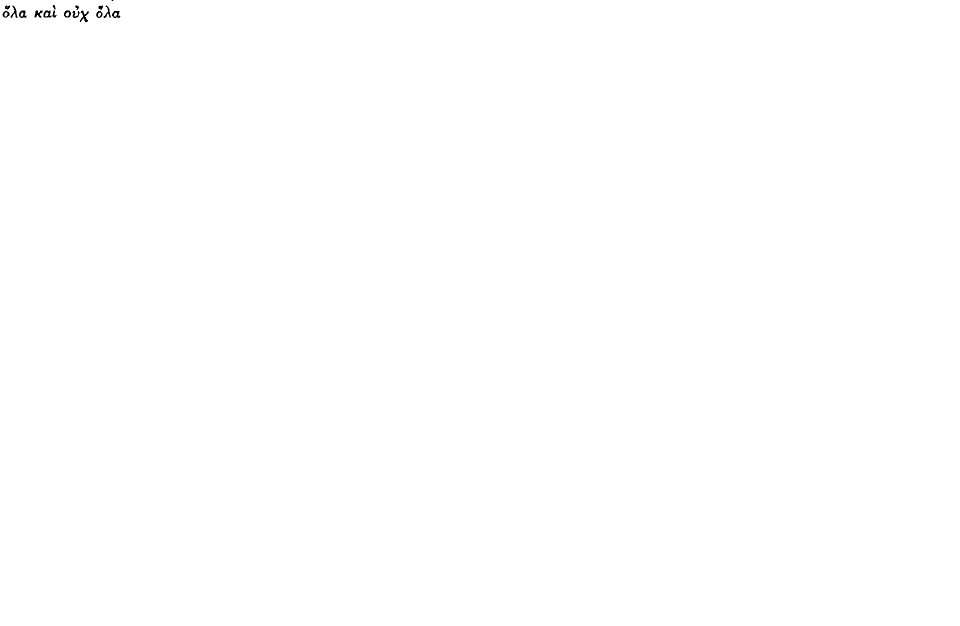 in Heraclitus’ (A.J.P. lxxvi [1955]. 341 n. 11). The explanation is given below, pp. 90–92 and p. 91, n. 3. Both the points queried by V. are essential to Parmenides' criticism: ordinary men not only want to keep both
in Heraclitus’ (A.J.P. lxxvi [1955]. 341 n. 11). The explanation is given below, pp. 90–92 and p. 91, n. 3. Both the points queried by V. are essential to Parmenides' criticism: ordinary men not only want to keep both  and
and  ; in trying to distinguish them they confuse them. That is why both expressions in their ordinary use are empty names (B 8. 38–41).Google Scholar
; in trying to distinguish them they confuse them. That is why both expressions in their ordinary use are empty names (B 8. 38–41).Google Scholar
page 85 note 1  , B 7. 3, for which Calogero suggests ‘l'esperienza delta molteplicita delle cose’ (Studi sull'Eleatismo, p. 32 n. 1); but if the adjective is
, B 7. 3, for which Calogero suggests ‘l'esperienza delta molteplicita delle cose’ (Studi sull'Eleatismo, p. 32 n. 1); but if the adjective is  it is better taken with the accompanying
it is better taken with the accompanying  Perhaps from
Perhaps from  , ‘widespread’.Google Scholar
, ‘widespread’.Google Scholar
page 85 note 1 Hermes, xxxiv (1899), 204–5.Google Scholar
page 85 note 3 Verdenius, , op. cit., pp. 50–51.Google Scholar
page 85 note 4 Ibid., citing Odyssey 3. 124–5 and 4–239 (cf. 266).
page 85 note 5 Cf. Kirk, and Raven, , Presocratic Philosophers, p. 281 n. 1,Google Scholar and by contrast Vlastos, , Trans. Am. Philol. Assn. lxxvii (1946), 74.Google Scholar
page 86 note 1 Heiberg's A, which makes two other such slips in the five lines quoted.
page 86 note 2 The sole recent exception is Zafiropoulo, , L'École éléate, p. 297.Google Scholar
page 86 note 3 Wilamowitz, , I.c.;Google Scholar cf. Reinhardt, , Parmenides, p. 9,Google ScholarCalogero, , Studi, p. 31 n. 1.Google Scholar
page 86 note 4 Poetarum Philosophorum Fragmenta (1901), p. 60.Google Scholar
page 86 note 5 B 8. 11, 15–18, 32–33. In line 33 most editors excise 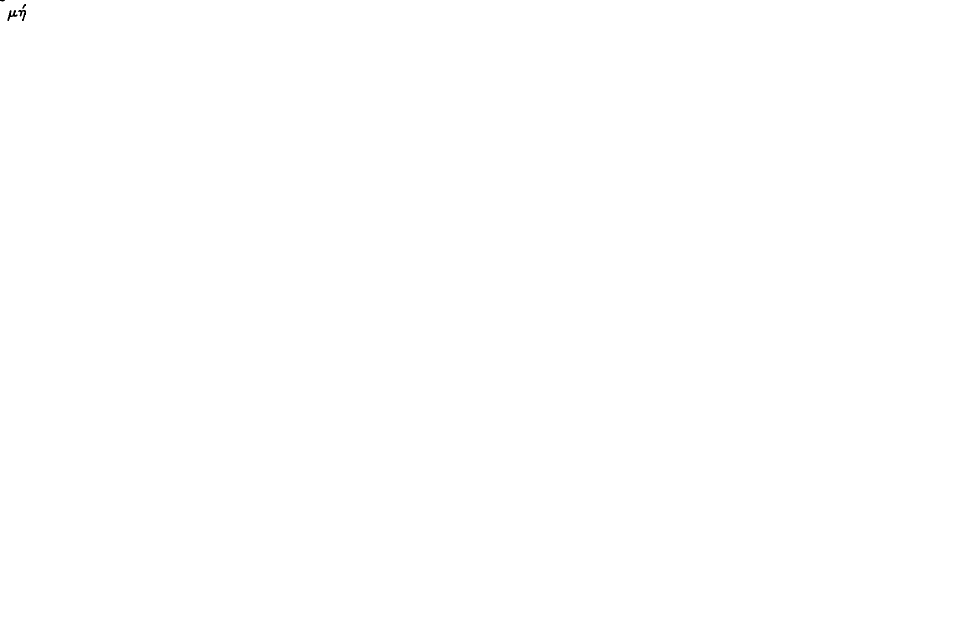 with Bergk and, with qualms, understand
with Bergk and, with qualms, understand  as copulative =
as copulative = 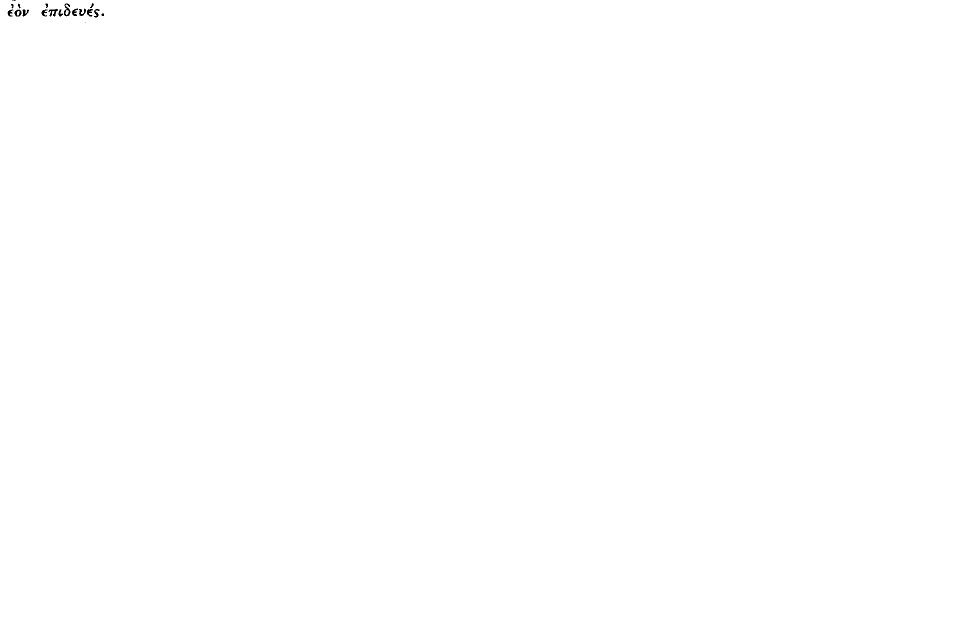 But see Fraenkel, Hermann, ‘Parmenidesstudien’ in Wege und Formen frühgriechischen Denkens, pp. 192–3.Google Scholar The same sense can be got from Gomperz's
But see Fraenkel, Hermann, ‘Parmenidesstudien’ in Wege und Formen frühgriechischen Denkens, pp. 192–3.Google Scholar The same sense can be got from Gomperz's 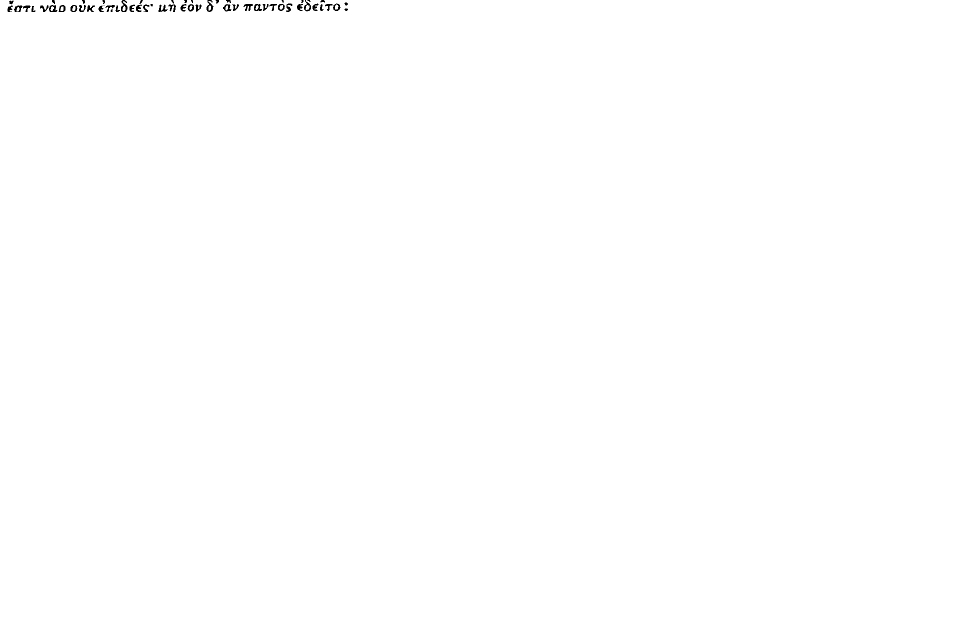 any admixture of
any admixture of  (any statement of the form
(any statement of the form  ) is as ruinous as taking the first wrong path at once. See below, pp. 90–92, 97–98.
) is as ruinous as taking the first wrong path at once. See below, pp. 90–92, 97–98.
page 86 note 6 ‘Plane’ Brandis (1813), ‘clare’ Karsten (1835): both accordingly felt compelled to discard  for Peyron's
for Peyron's 
page 86 note 7 Arbenz, , Die Adjektiv auf  Zürich-Tübingen (1933), pp. 38–41;Google ScholarFraenkel, Hermann, Hermes, lx (1925), 190.Google Scholar See, e.g., Aesch. Persae 87 (
Zürich-Tübingen (1933), pp. 38–41;Google ScholarFraenkel, Hermann, Hermes, lx (1925), 190.Google Scholar See, e.g., Aesch. Persae 87 (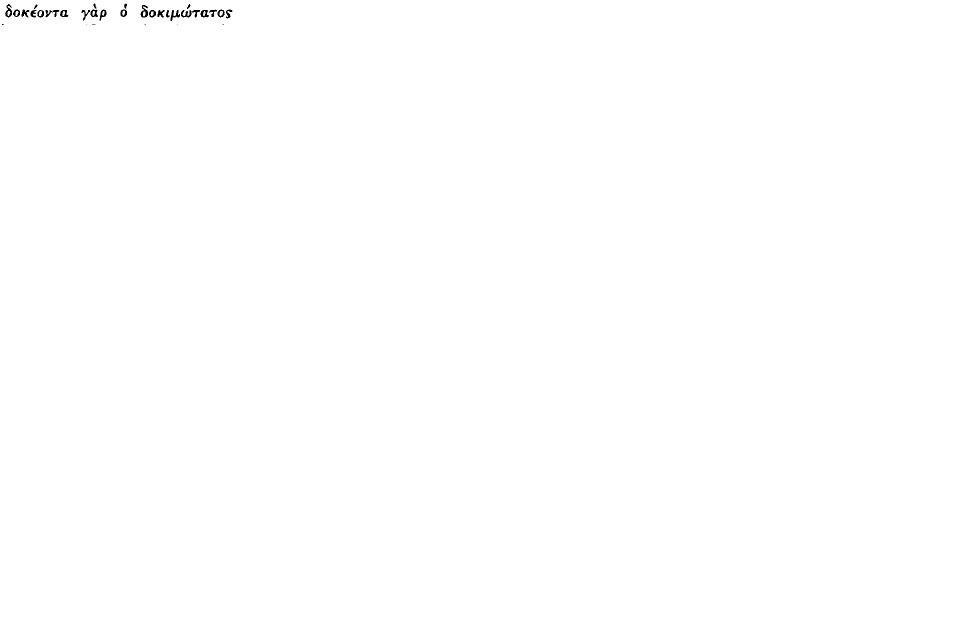 with inf. = ‘able’), Democritus B 67, B 68. In Herodotus the sense ‘renowned* becomes common, but never with the implication that the renown is not wholly deserved. The exception that may seem to tell for Wilamowitz is Heraclitus B 28,
with inf. = ‘able’), Democritus B 67, B 68. In Herodotus the sense ‘renowned* becomes common, but never with the implication that the renown is not wholly deserved. The exception that may seem to tell for Wilamowitz is Heraclitus B 28, 
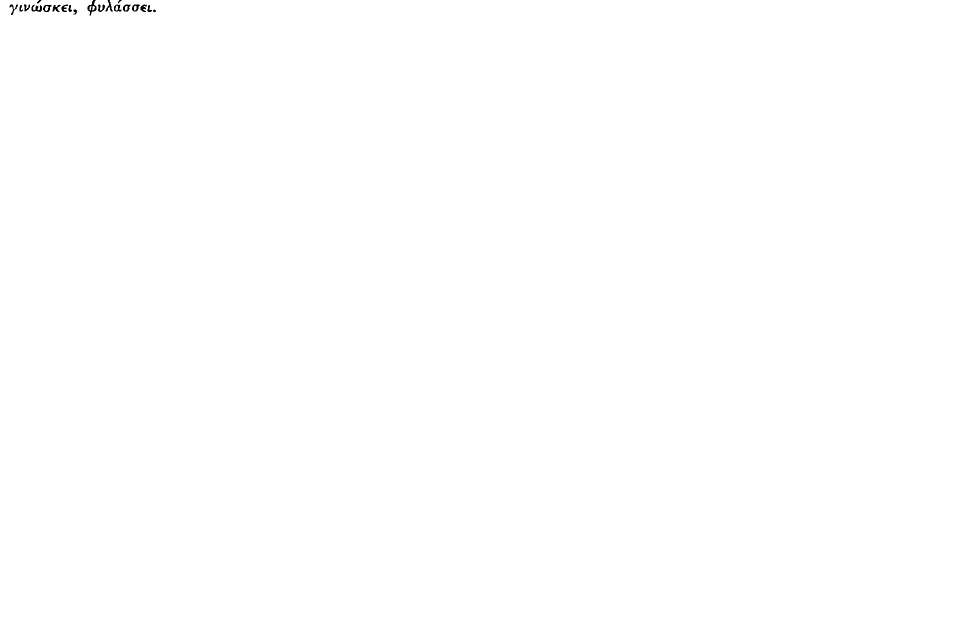 But if we give
But if we give 
 here the weak sense of ‘having the greatest (but finally undeserved) reputation’ we spoil the aphorism, which is a paradox comparable with B 5
here the weak sense of ‘having the greatest (but finally undeserved) reputation’ we spoil the aphorism, which is a paradox comparable with B 5 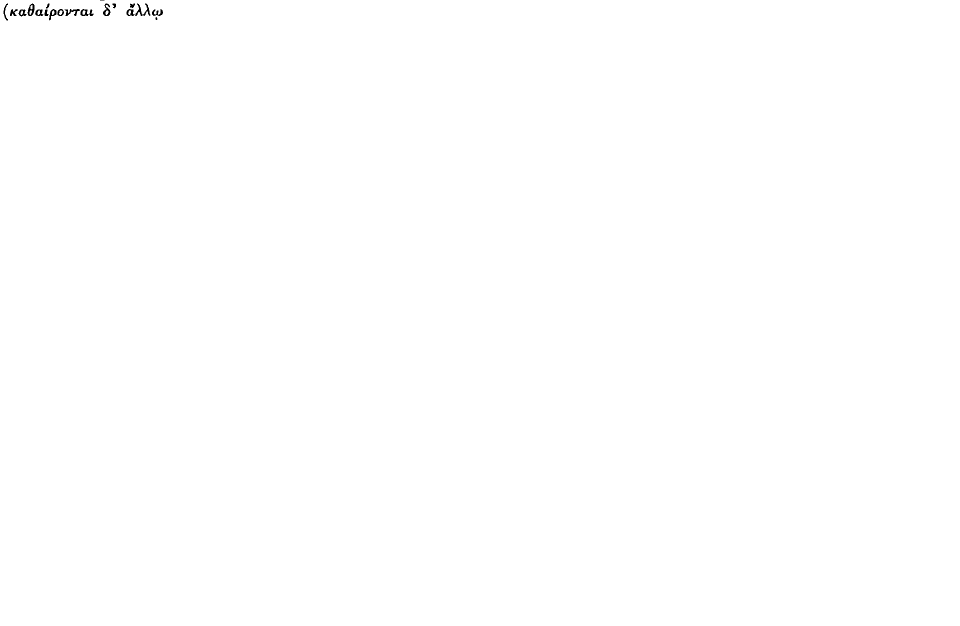
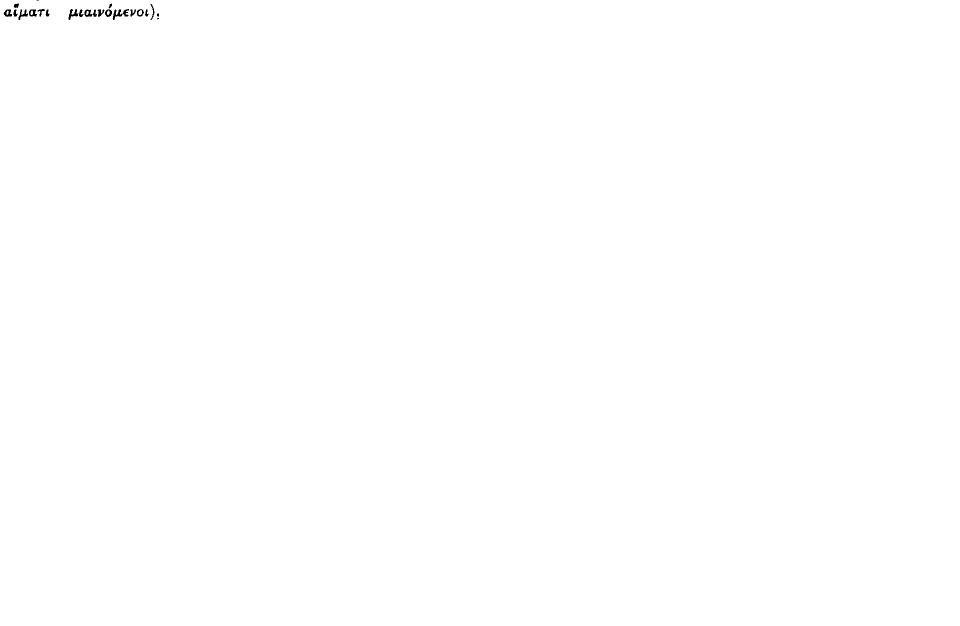 , B 56
, B 56 
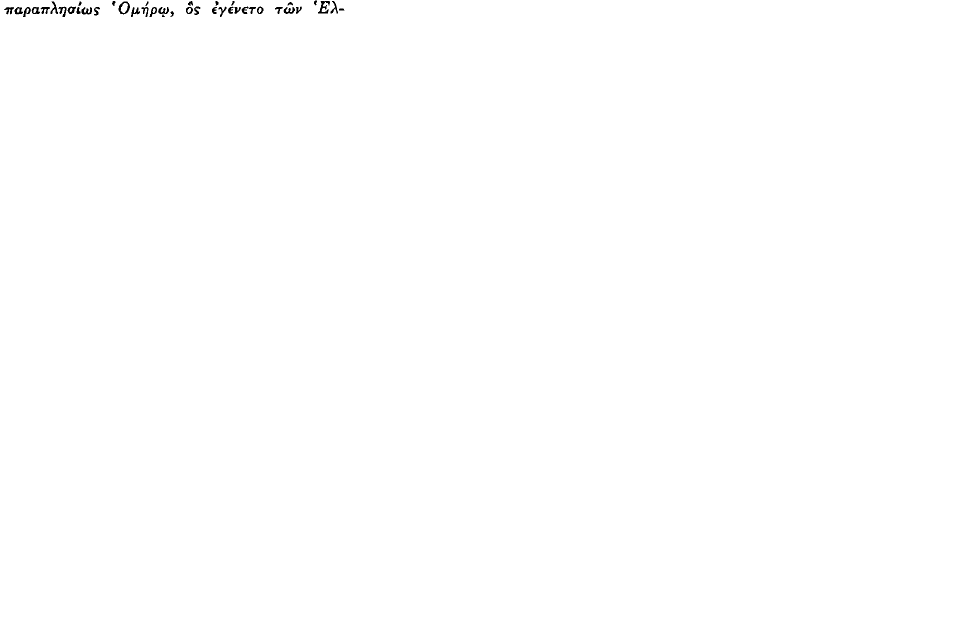
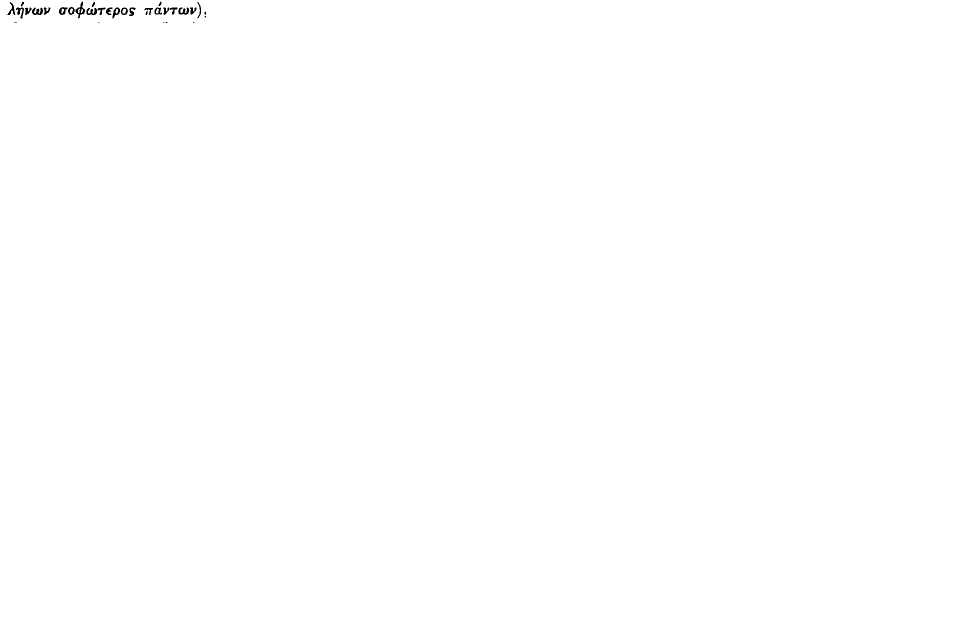 , B 68 (describing the mysteries as
, B 68 (describing the mysteries as  ). Such paradoxes trade on giving their full sense to certain expressions while putting them, as it were, in inverted commas: your ‘sage’ Homer was a fool, your ‘purifications’ are defilings, your
). Such paradoxes trade on giving their full sense to certain expressions while putting them, as it were, in inverted commas: your ‘sage’ Homer was a fool, your ‘purifications’ are defilings, your 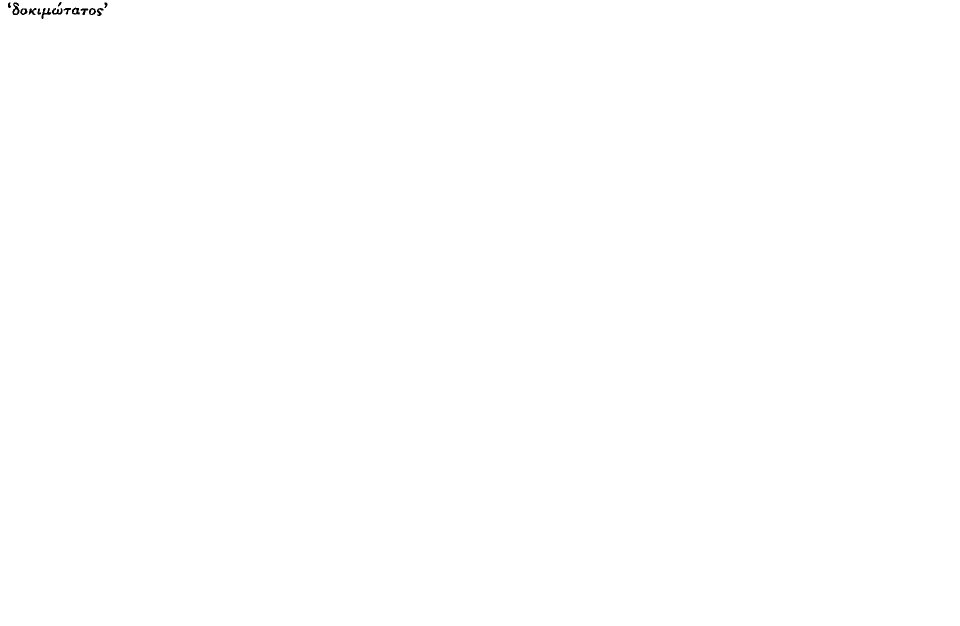 is only an expert on
is only an expert on  .
.
page 87 note 1 Prompted perhaps by B 19, 
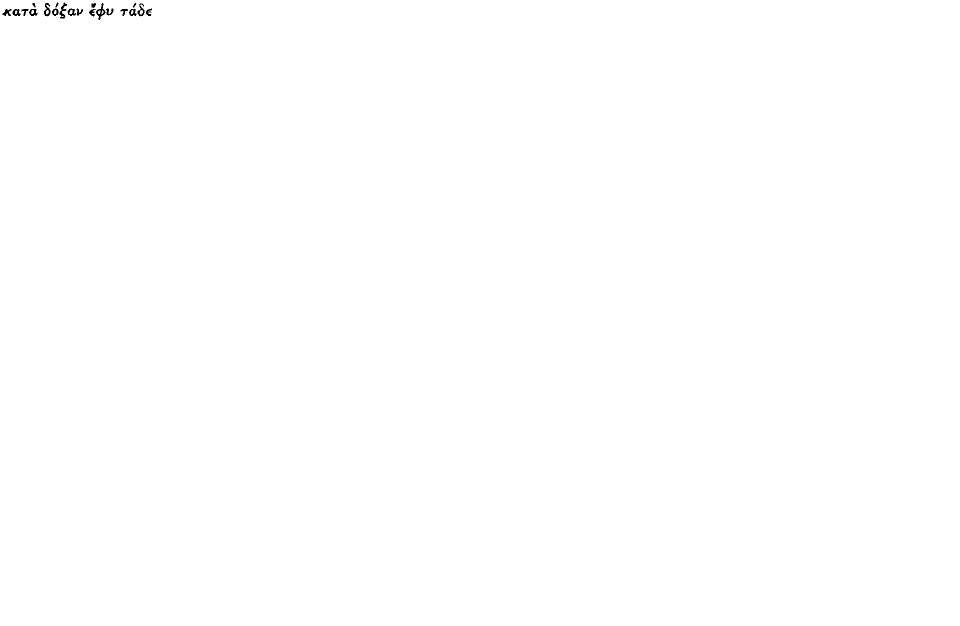 This sense again might seem warranted by Heraclitus B 28 (see last note); but of course Heraclitus' characteristic word-play depends on there not being any such overt connexion in sense between the words.
This sense again might seem warranted by Heraclitus B 28 (see last note); but of course Heraclitus' characteristic word-play depends on there not being any such overt connexion in sense between the words.
page 87 note 2 Fraenkel (see p. 86, n. 7 above) had suggested ‘annehmbar, sich Anerkennung verschaffend’.
page 87 note 3 Parmenides, , pp. 49–51.Google Scholar
page 87 note 4 Op. cit. (p. 86, n. 7 above), comparing 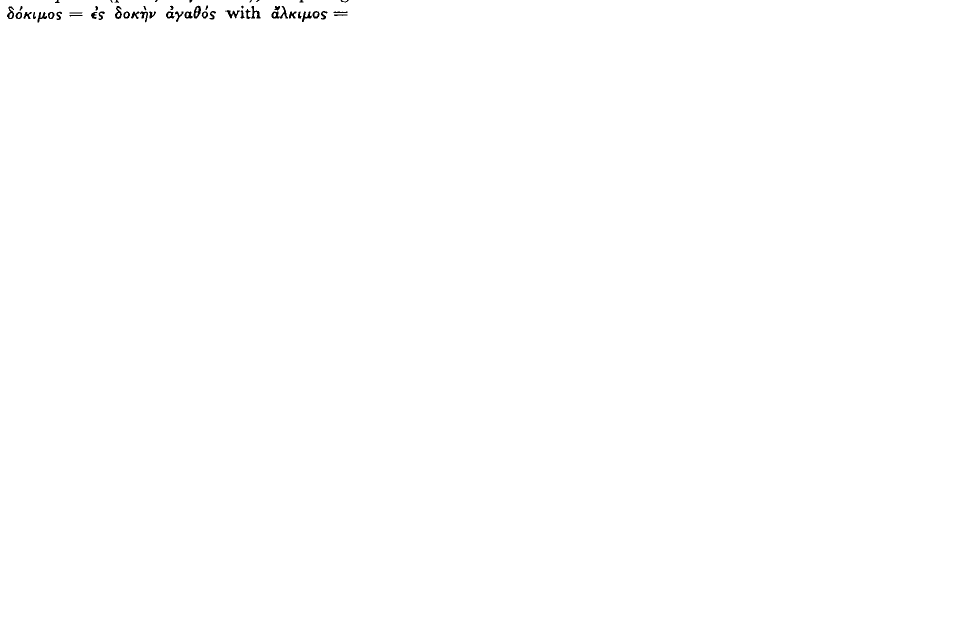
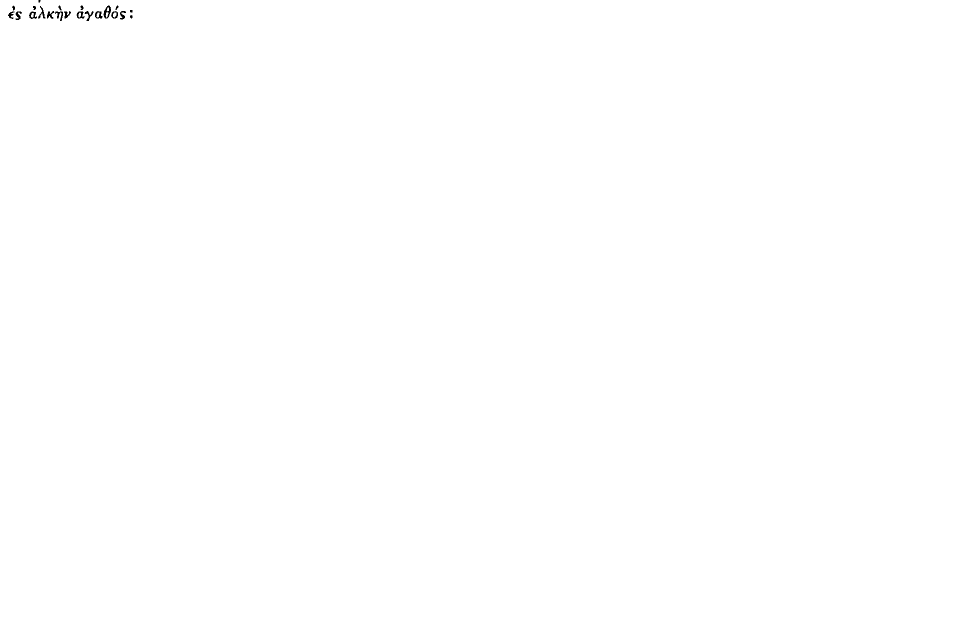 cf. Page, , Sappho and Alcaeus, p. 184 (ad loc. A 6).Google Scholar
cf. Page, , Sappho and Alcaeus, p. 184 (ad loc. A 6).Google Scholar
page 87 note 5 The elision in Xenophanes B 3. 5 was exorcized by Wilamowitz. Kirk, and Raven, (Presocratic Philosophers, p. 268)Google Scholar say ‘the elision is otherwise unknown in hexameters’, but editors have cited Iliad 11. 272, 13. 777, 17. 89.
page 87 note 6 ‘Wie man alles durchforschend das Scheinsein auf seine Echtheit prūfen muβ’, Parmenides Lehrgedicht (1897), p. 59.Google Scholar
page 87 note 7 LSJ. s.v. II: e.g. 
page 87 note 8 Poet. Phil. Frag. (1901), p. 60.Google Scholar
page 87 note 9 Reinhardt, , Parmenides, p. 6. The sense required by Diels is found only in the letter of ‘Pherecydes’, Diog. Laert. 1. 122. Hesychius gives  Cf. Gow on Theocritus 30. 25 (apparently misread by LSJ. s.v.).Google Scholar
Cf. Gow on Theocritus 30. 25 (apparently misread by LSJ. s.v.).Google Scholar
page 88 note 1 Reinhardt, , op. cit, pp. 7–9.Google Scholar
page 88 note 2 Verdenius, , Parmenides, p. 49.Google Scholar
page 88 note 3  is of course no obstacle: cf. e.g. Od. 3. 124–5.
is of course no obstacle: cf. e.g. Od. 3. 124–5.
page 88 note 4  cf. Denniston, , Greek Particles,2 pp. 482, 484.Google Scholar
cf. Denniston, , Greek Particles,2 pp. 482, 484.Google Scholar
page 89 note 1 On this see Verdenius, , Parmenides, p. 53Google Scholar and app. E. With Parmenides, if not before, appears the ambiguity in  and
and 
 which runs through fifth-century thought: ‘unchallenged custom’ (B 7. 3), ‘arbitrary decision’ (B 8. 53); the second an historical mirage thrown by the first, as the Social Contract was by current forms of society.
which runs through fifth-century thought: ‘unchallenged custom’ (B 7. 3), ‘arbitrary decision’ (B 8. 53); the second an historical mirage thrown by the first, as the Social Contract was by current forms of society.
page 90 note 1 Cornford, , Plato and Parmenides, p. 29.Google Scholar How far Cornford's picture of Parmenides’ predecessors as sharing this assumption is acceptable is another question and one which lies outside this paper.
page 90 note 1 Raven, , Pythagoreans and Eleatics, p. 176 and ch. iii passim.Google Scholar It is to be noticed that Mr. Raven takes a different and, I believe, more plausible view in the later Presocratic Philosophers (see p. 93 n. 4 below).
page 90 note 3 Plato and Parmenides, p. 30Google Scholar n. 2. As a parallel he cites B 6. 1,  yet within a few lines he destroys this parallel by taking the
yet within a few lines he destroys this parallel by taking the  with the immediately preceding infinitives (so Simplicius and Burnet, rightly; Cornford, , op. cit., p. 31 n. 2; see below, p. 94).Google Scholar In B 8. 3, as other editors have seen,
with the immediately preceding infinitives (so Simplicius and Burnet, rightly; Cornford, , op. cit., p. 31 n. 2; see below, p. 94).Google Scholar In B 8. 3, as other editors have seen,  is part of the predicate (cf. Laws 904 aGoogle Scholar).
is part of the predicate (cf. Laws 904 aGoogle Scholar).
page 90 note 4 Plato and Parmenides, p. 33. Of the other ‘premisses’ detected by Cornford one (‘that which is is one and cannot be many’) will be considered in part (b) of this section of the paper and the other (‘that which is can be thought or known, and uttered or truly named; that which is not, cannot’), or an emended version of this, in part (c). None a in fact a ‘premiss’.Google Scholar
page 91 note 1 The two paths are ‘It exists and must exist', ‘It does not exist and cannot’ (B 2. 3 and 5). The force of the ‘must’ and ‘cannot’ is shown by the remaining path, which says accordingly that the subject can but need not exist (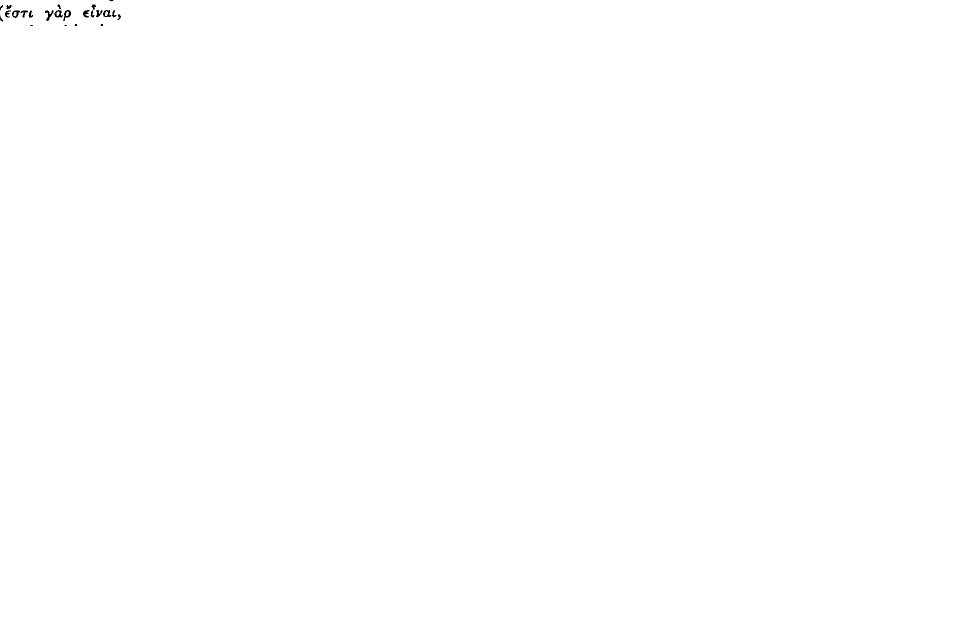 , cf. p. 94 below), and means by this that the ques tion ‘Does it exist ?’ has to be answered some times yes and sometimes no (see the text). In ruling out ‘can’ in favour of either ‘must’ or ‘cannot’ the other paths are ruling out this qualified answer. This warns us against saying that the third path is a conflation of the other two.
, cf. p. 94 below), and means by this that the ques tion ‘Does it exist ?’ has to be answered some times yes and sometimes no (see the text). In ruling out ‘can’ in favour of either ‘must’ or ‘cannot’ the other paths are ruling out this qualified answer. This warns us against saying that the third path is a conflation of the other two.
page 91 note 2 Pace A. H. Coxon, who holds that Parmenides consistently distinguishes between  = mankind as a whole and
= mankind as a whole and  = philosophers (C.Q. xxviii [1934], 134). I am obliged to him for a copy of his paper vigorously annotated with its author's second thoughts.Google Scholar
= philosophers (C.Q. xxviii [1934], 134). I am obliged to him for a copy of his paper vigorously annotated with its author's second thoughts.Google Scholar
page 91 note 3 Because they have to break it into two supposedly Heraclitean conjunctions: being and not-being, and same and not same (cf. Vlastos, , p. 84,Google Scholar n. 1 above). Quite apart from the implausibility of the attempt to read these as actual echoes of Heraclitus (see the ‘parallels’ adduced by Kranz in his apparatus, Vors7 i. 233), this fragmentation destroys the sense and the grammar. The point is not that men simply identify being with not-being, or the same with the different, but that they cannot distinguish  and
and 
 on their own terms without identifying them. Cornford, who does not claim a reference to Heraclitus here, commits the same fault of fragmentation (Plato and Parmenides, p. 33)Google Scholar: in a changing world, he says, men hold that things (a) are (at one time) and are not (at another), and (b) pass from being one thing (the same) to being another (not the same).
on their own terms without identifying them. Cornford, who does not claim a reference to Heraclitus here, commits the same fault of fragmentation (Plato and Parmenides, p. 33)Google Scholar: in a changing world, he says, men hold that things (a) are (at one time) and are not (at another), and (b) pass from being one thing (the same) to being another (not the same).
page 92 note 1 See p. 86, n. 5 above.
page 92 note 2 Plato and Parmenides, p. 35.Google Scholar
page 92 note 3 Simplicius, , Phys. 145. 1–146.Google Scholar 25 Diels. Some have suggested that the passage is not continuous and that some lines have dropped out after B 8. 25 (cf. Zeller-Nestle i7, 692). But it is not the case that Proclus quotes B 5 as though it directly followed B 8. 25: he turns to it with the words  (in Parm. 708 Cousin).
(in Parm. 708 Cousin).
page 92 note 4  and
and are used as standard adverbs with the dative: for the absolute use as here cf. Aeschylus, , Eutn. 240,
are used as standard adverbs with the dative: for the absolute use as here cf. Aeschylus, , Eutn. 240, 
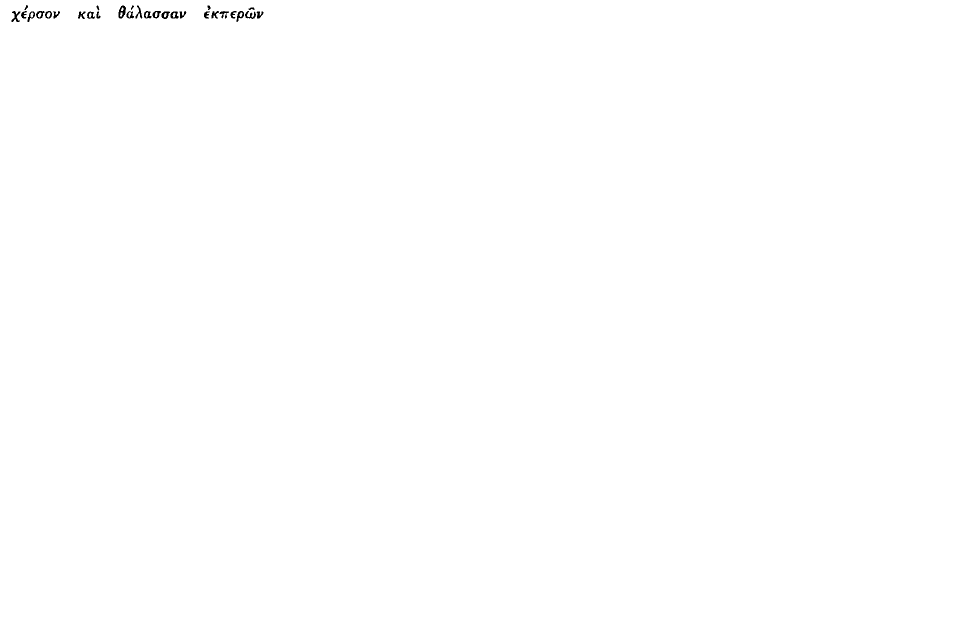 (Homer's
(Homer's 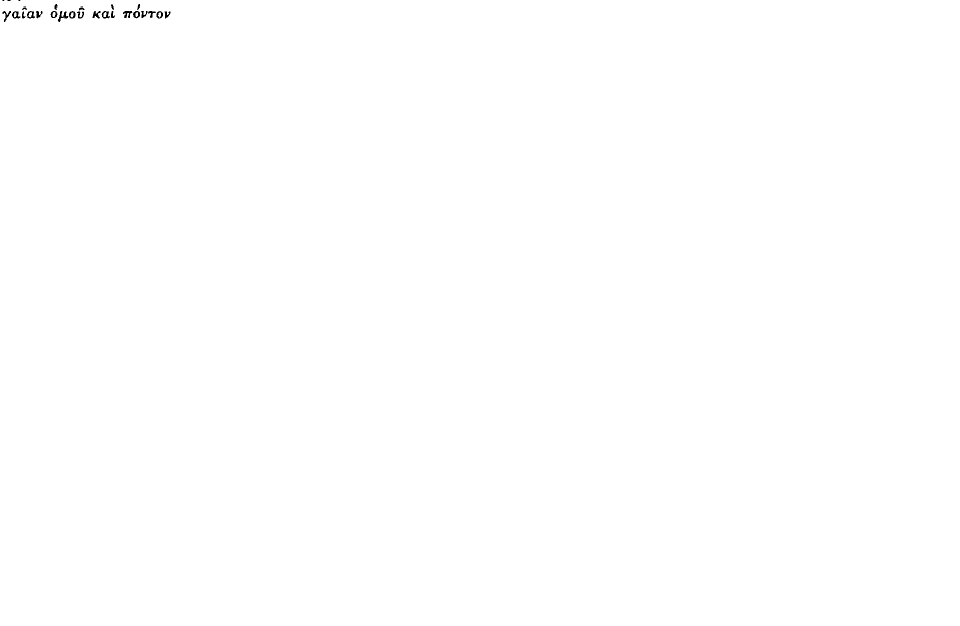 ), where as all editors have seen
), where as all editors have seen has adverbial force whether or not it is read as technically qualifying the nouns: so Parmenides in B 8. 22 (and perhaps the formula
has adverbial force whether or not it is read as technically qualifying the nouns: so Parmenides in B 8. 22 (and perhaps the formula![]() Il. 4. 315, which scholl. rightly use
Il. 4. 315, which scholl. rightly use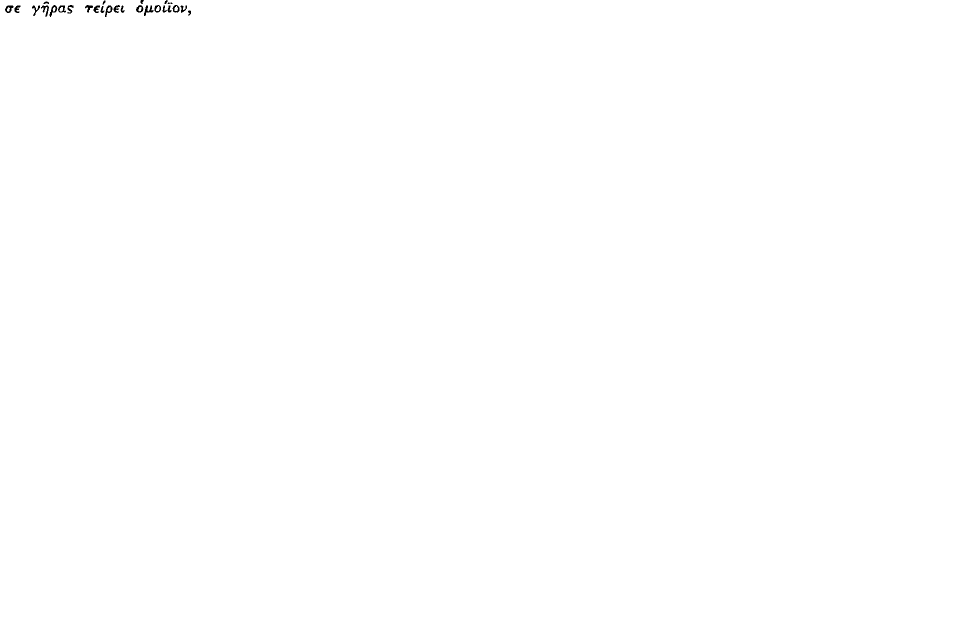 to explain). The form
to explain). The form which appears in the fifth century is not found in Homer, Hesiod, or Parmenides, though
which appears in the fifth century is not found in Homer, Hesiod, or Parmenides, though occurs in them all: notice that
occurs in them all: notice that  kept its adverb
kept its adverb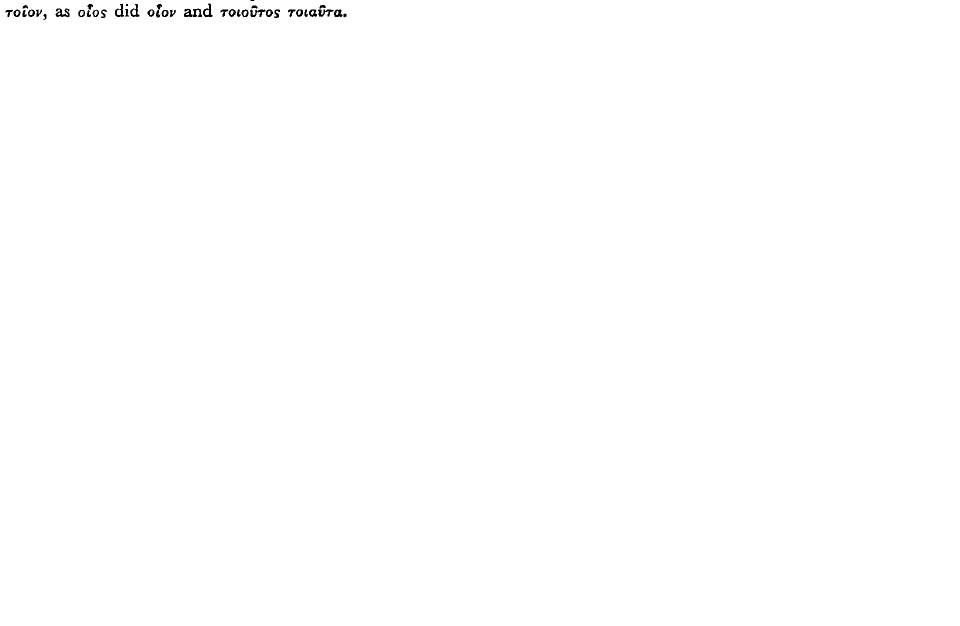 Google Scholar
Google Scholar
page 93 note 1 See the Additional Note, p. 101 below.
page 93 note 2 On this see the third section of the paper.
page 93 note 3 Melissus B 7 = Simplicius, , Phys. 111. 22–23 Diels (cf. 112. 3–4):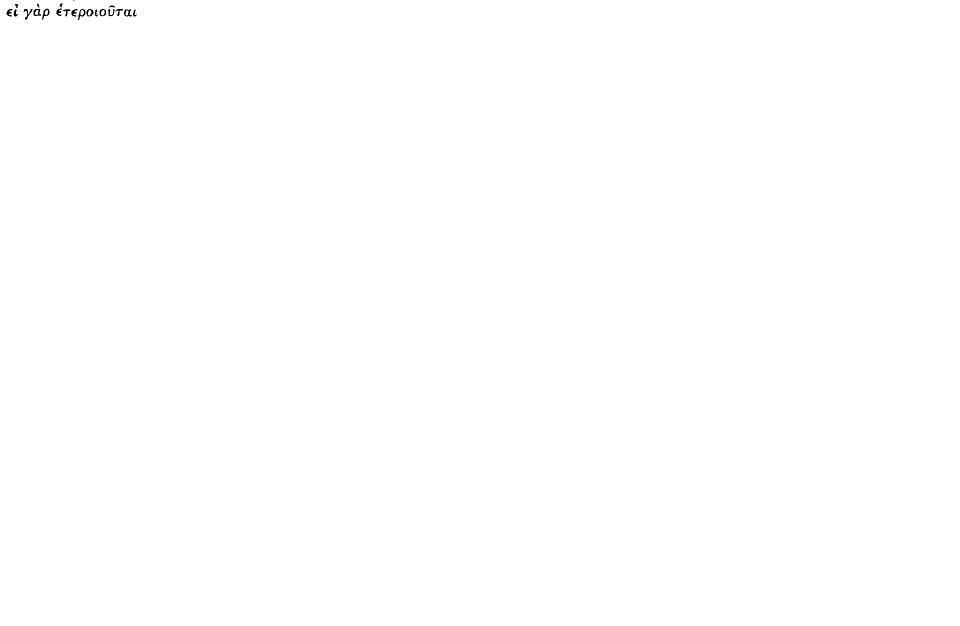
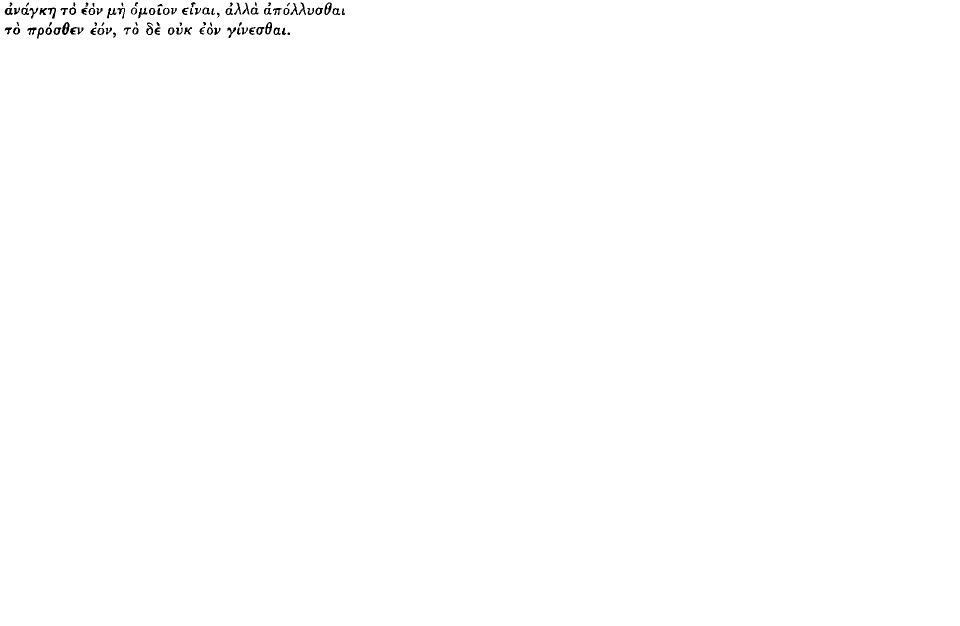 Google Scholar
Google Scholar
page 93 note 4 Class. Philol. xli (1946), 169,Google Scholar criticizing Verdenius's suggestion that the subject is ‘All that exists, the total of things’. Cf. Calogero, Studi, p. 18;Google ScholarKirk, and Raven, , Presocratic Philosophers, p. 269.Google Scholar
page 94 note 1 Commentators are still seduced by Aristotle's loaded comment in Met. A 3. 984a29-b1 into diagnosing Parmenides' basic fallacy as a confusion between the existential and the predicative senses of  : as though he was (a) right to say that we cannot talk about a non-existent X but (b) wrong to suppose on this score that we cannot say ‘X is not white’. Both (a) and (b) are groundless. Parmenides, though he certainly could not have drawn the necessary logical distinctions, might nevertheless fairly assume that, if one part of the world is white but not another, this can be formulated exis-tentially as ‘there is white, or a white thing, here but not there’: the point may be confused but is not annulled by the use of
: as though he was (a) right to say that we cannot talk about a non-existent X but (b) wrong to suppose on this score that we cannot say ‘X is not white’. Both (a) and (b) are groundless. Parmenides, though he certainly could not have drawn the necessary logical distinctions, might nevertheless fairly assume that, if one part of the world is white but not another, this can be formulated exis-tentially as ‘there is white, or a white thing, here but not there’: the point may be confused but is not annulled by the use of 
 to mean both the colour and what has it. The move from
to mean both the colour and what has it. The move from 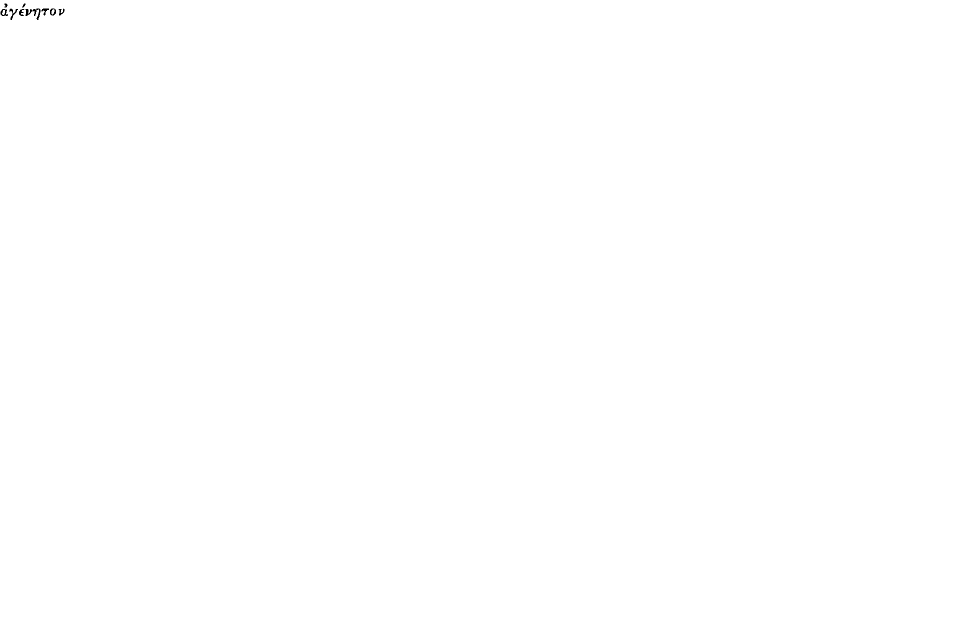 to
to 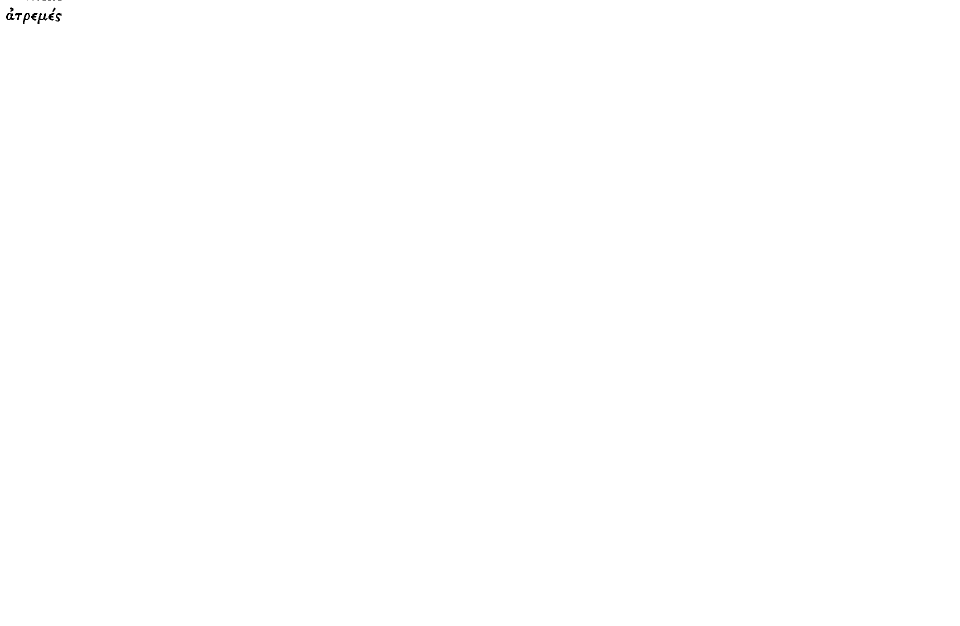 is valid enough: what is mistaken is his claim that we cannot talk of the non-existent. We can, of course: mermaids, for instance. How we can is another matter, and Aristotle was not the first or last philosopher to fail to see his way through it; but it is his failure that underlies his treatment of the Eleatics and their predecessors in A 3.
is valid enough: what is mistaken is his claim that we cannot talk of the non-existent. We can, of course: mermaids, for instance. How we can is another matter, and Aristotle was not the first or last philosopher to fail to see his way through it; but it is his failure that underlies his treatment of the Eleatics and their predecessors in A 3.
page 94 note 2 A, which can exist, is distinguished from B, which (poor thing) cannot: invalid, for to say ‘nothing cannot exist’ is not to ascribe compulsory non-existence to anything but to say that it is necessarily (truistically) true that what doesn't exist doesn't exist, and this unexciting reformulation disables the argument. The fallacy is the so-called de re interpretation of modal statements.
page 94 note 3 Kranz tries to save matters with an un warranted ‘nur’: ‘Nötig ist zu sagen und zu denken, daβ nur das Seiende ist; denn Sein ist, ein Nichts dagegen ist nicht.’ The trans lation ‘One must say and think that what is, is,’ is ruled out by pp. 90–92 above.
page 94 note 4 Notice that Parmenides is refuting the first wrong path for the benefit of the plain men who take the second; for he refutes it from their premiss, that what can be thought of can exist. A convinced follower of the first wrong path would deny this by saying not only  but
but 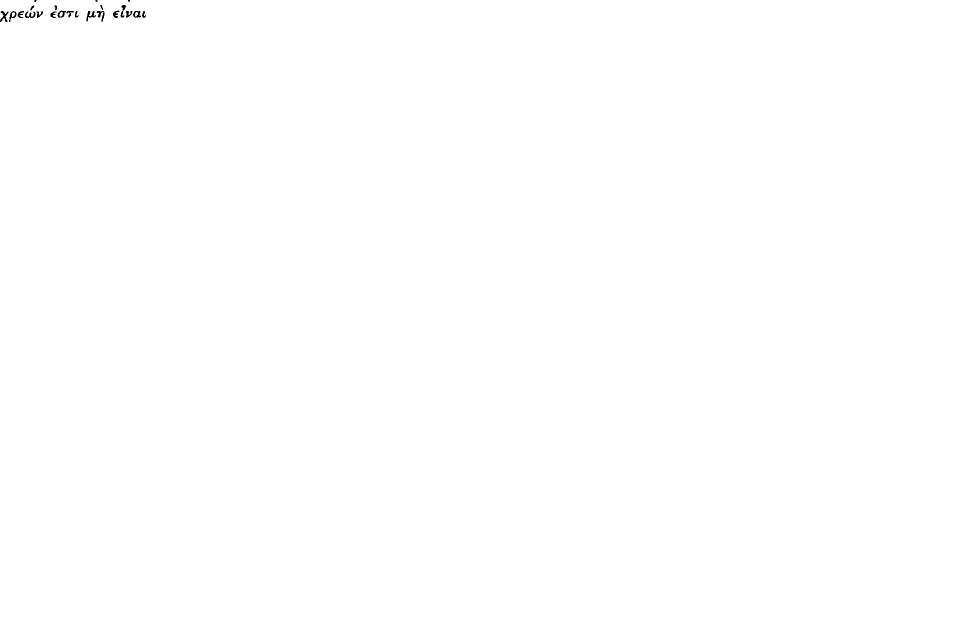 (B 2. 5), and with this Parmenides admits he could do nothing: it is
(B 2. 5), and with this Parmenides admits he could do nothing: it is  (B 2. 6). But since no one takes this line it is enough to rule out
(B 2. 6). But since no one takes this line it is enough to rule out 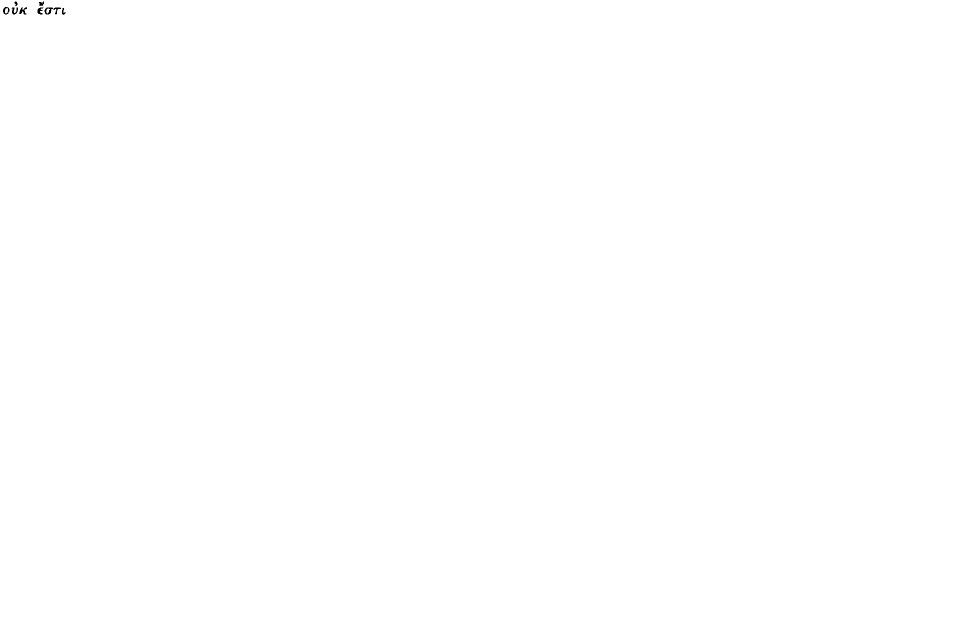 from the plain man's assumptions.
from the plain man's assumptions.
page 95 note 1 ‘In the sense described’: I am not of course denying that some of the ideas em ployed in the course of the argument may have been inherited from earlier theorists. This must be true of some of the cosmogony, and probably of at least the idea of  in the
in the  (see the third section of the paper).
(see the third section of the paper).
page 95 note 2 e.g. by Coxon, , C.Q. xxviii (1934), 140.Google Scholar
page 95 note 3 A point most recently taken by Jameson, , Phronesis, iii (1958), 15;CrossRefGoogle Scholar but it does not go home, as he thinks, against Fraenkel, (Wege und Formen, p. 196).Google Scholar
page 95 note 4 Argued by Vlastos, (Trans. Am. Philol. Assn. lxxvii [1946], 66–77,Google ScholarGnomon, xxv [1953], 168)Google Scholar following von Fritz, (Class. Philol. xl [1945], 236–42).Google Scholar
page 95 note 5 Vlastos argues that ‘the thought which knows being could hardly be denied existence … and since being is "all alike" (B 8. 22) [butseepp. 92–93 above on this reading], if thought is any part of being, all being must be thought’ (Gnomon, xxv [1953], 168). This takes for granted that Parmenides must have faced squarely the question ‘Is thinking of being a part of being?’ Plato implies that he had not; for Parmenides constantly couples thinking and naming (B 2. 7–8; B 8. 17; B 8. 35–36), and in Soph. 244 c-d Plato argues that Parmenides does not face a dilemma in the relation of to its name: are there after all two things in existence or is the name a name of nothing? This is in effect the same problem as whether the v6t)iia is distinct from or identical with
to its name: are there after all two things in existence or is the name a name of nothing? This is in effect the same problem as whether the v6t)iia is distinct from or identical with
 , and (for what this is worth) Plato implies that it had not been faced. He implies the same at Soph. 248 d-249 a in making the Eleatic Stranger say that if reality contains life and soul and understanding it cannot be
, and (for what this is worth) Plato implies that it had not been faced. He implies the same at Soph. 248 d-249 a in making the Eleatic Stranger say that if reality contains life and soul and understanding it cannot be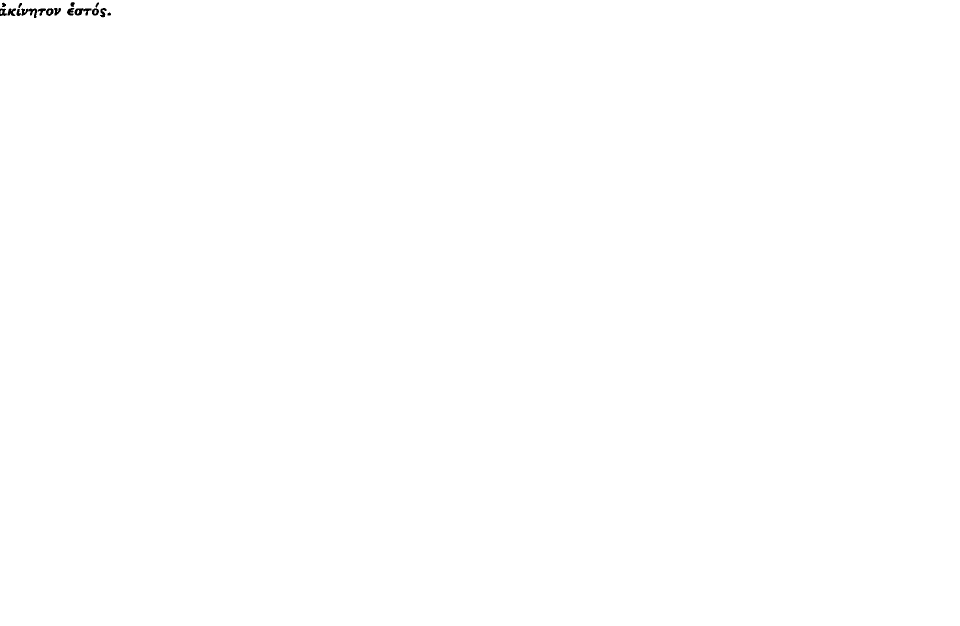 Google Scholar
Google Scholar
page 96 note 1 Wege und Formal, pp. 186–97.Google Scholar
page 96 note 2 Empedocles B 62. 6.
page 96 note 3 Studi, p. 27 and n. 1.Google Scholar
page 96 note 4 The  is full of metaphors of movement and arrested movement: motion on a path comes often (including the puzzling B 5), and arrested motion in B 6. 3; B 7. 3; B 8. 13–15 and 37. Cf. Woodbury, L., Harvard Studies in Class. Philol. lxiii (1958), 154.Google Scholar
is full of metaphors of movement and arrested movement: motion on a path comes often (including the puzzling B 5), and arrested motion in B 6. 3; B 7. 3; B 8. 13–15 and 37. Cf. Woodbury, L., Harvard Studies in Class. Philol. lxiii (1958), 154.Google Scholar
page 97 note 1 See the Additional Note, p. 101 below.
page 97 note 2 And if  then also in this context its opposite,
then also in this context its opposite,  (Thus Aristotle, maintaining against Parmenides that continuity does not preclude but always entails divisibility, can say that time and any process in time is
(Thus Aristotle, maintaining against Parmenides that continuity does not preclude but always entails divisibility, can say that time and any process in time is  and therefore
and therefore  , Phys. Z 2. 232b23–26 et al.) In this setting of temporal continuity it is natural to explain that
, Phys. Z 2. 232b23–26 et al.) In this setting of temporal continuity it is natural to explain that  in line 23, which is commonly read as implying an answering
in line 23, which is commonly read as implying an answering  in 24, must have not its spatial sense but its wider meaning, ‘in this respect’ (Empedocles B 26. 10); but I doubt if Parmenides wants wholly to lose the spatial metaphor in
in 24, must have not its spatial sense but its wider meaning, ‘in this respect’ (Empedocles B 26. 10); but I doubt if Parmenides wants wholly to lose the spatial metaphor in  for not only this passage but the whole treatment of temporal variation is couched in spatial metaphor (the impossibility of any different state of affairs is pictured as being chained to one place, B 8. 14–15, 26–27, 30–31, 37–38); and Parmenides wants to keep open the possibility of a spatial application of the same arguments. (Karsten, pointing to the singularity of
for not only this passage but the whole treatment of temporal variation is couched in spatial metaphor (the impossibility of any different state of affairs is pictured as being chained to one place, B 8. 14–15, 26–27, 30–31, 37–38); and Parmenides wants to keep open the possibility of a spatial application of the same arguments. (Karsten, pointing to the singularity of  here without an answering adverb and observing that the necessary contrast is carried by
here without an answering adverb and observing that the necessary contrast is carried by  , emended so as to excise it; Stein proposed
, emended so as to excise it; Stein proposed  , plausibly in view of the source of contamination in B 8. 45 and 48.)
, plausibly in view of the source of contamination in B 8. 45 and 48.)
page 98 note 1 See p. 86, n. 5 above.
page 98 note 1  in B 8. 32 means ‘because’ (as generally in Homer: so Fraenkel, , Wege und Formen, pp. 191–2)Google Scholar, not ‘therefore’ (as von Fritz, argues in Class. Philol. xli [1946], 237–8)Google Scholar. Von Fritz urges that to deduce immobility from finiteness would reverse the ‘natural logical order’ and depart from Parmenides’ procedure of putting the ‘more essential qualities of
in B 8. 32 means ‘because’ (as generally in Homer: so Fraenkel, , Wege und Formen, pp. 191–2)Google Scholar, not ‘therefore’ (as von Fritz, argues in Class. Philol. xli [1946], 237–8)Google Scholar. Von Fritz urges that to deduce immobility from finiteness would reverse the ‘natural logical order’ and depart from Parmenides’ procedure of putting the ‘more essential qualities of  before the less, but he has not seen that the
before the less, but he has not seen that the 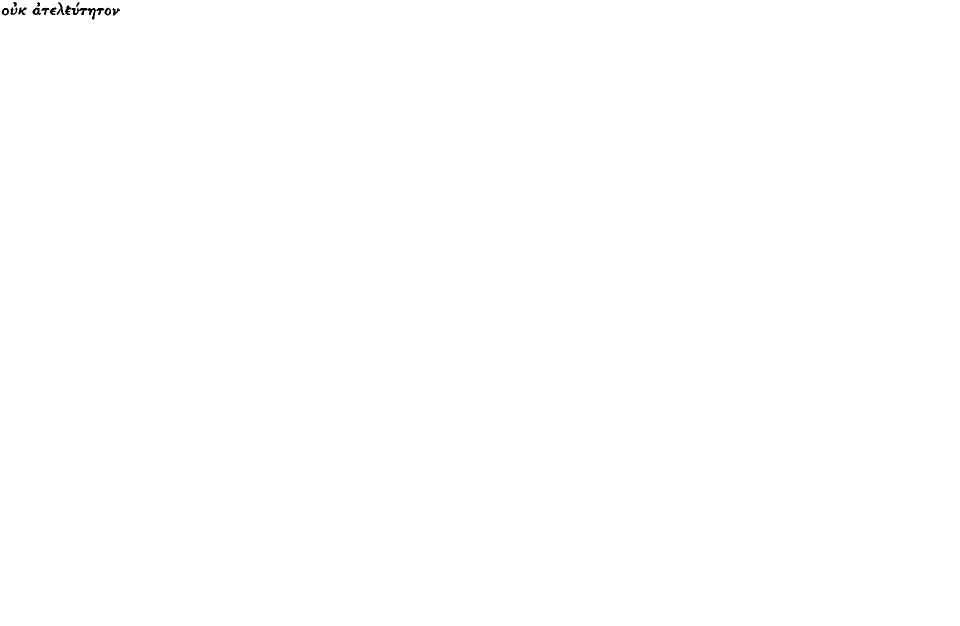 is in fact the conclusion of the opening argument and the premiss of the next.
is in fact the conclusion of the opening argument and the premiss of the next.
page 98 note 3 Iliad 18. 501; Odyssey 5. 289.
page 98 note 4 Aristotle, , Phys.  4. 203b4–15.Google Scholar
4. 203b4–15.Google Scholar
page 98 note 5 See Ross's note on Phys.  4. 2032 10–15; Raven, , Pythagoreans and Eleatics, pp. 188–94.Google Scholar
4. 2032 10–15; Raven, , Pythagoreans and Eleatics, pp. 188–94.Google Scholar
page 99 note 1 Burnet, , Early Greek Philosophy 4, p. 325.Google Scholar
page 100 note 1 Vlastos (Gnomon, xxv [1953], 34–35) thinks this fragment (= Simplicius, Phys. 109. 31–32 Diels) to be concerned only with temporal infinity. His motive for trying to discount its natural meaning (and that of the following fragment, B 4) is that he does not see how to reconcile a spatial conclusion with B 9, which denies that  can have
can have  or
or  But Melissus was just denying that
But Melissus was just denying that  can be a solid (see this section of the paper).
can be a solid (see this section of the paper).
page 100 note 2 Fraenkel now challenges this reading of the lines (Wege und Formen, additional note on p. 191), arguing that otherwise Parmenides faces the dilemma I describe in the text; but the dilemma is genuine and Melissus' language shows that he recognized it.
page 100 note 3 Clement, who quotes this fragment, interprets it in terms of temporal not spatial distance (Strom, v. 15), but shows that he found no warrant for this in the text by his words 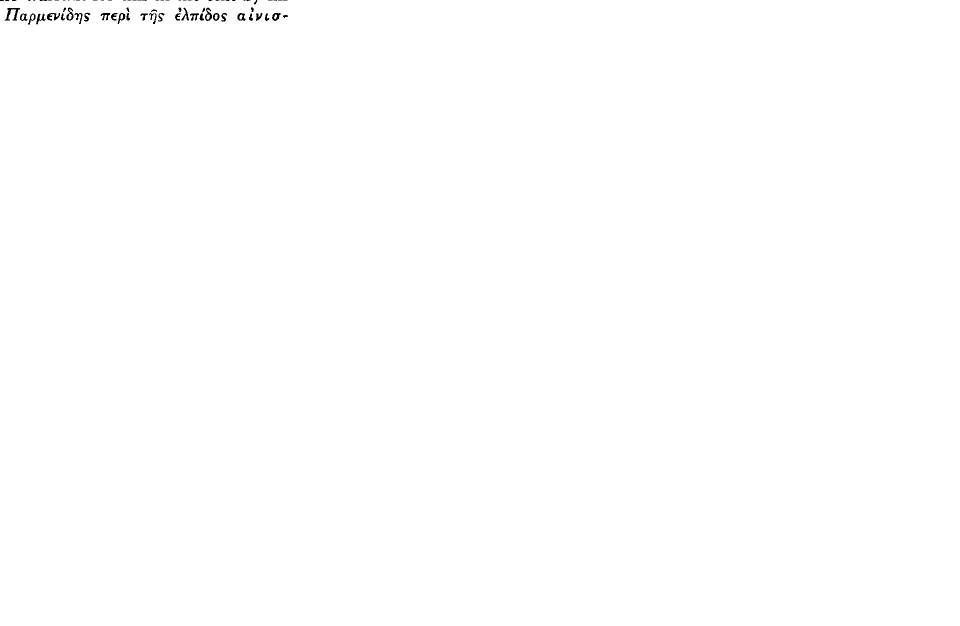
 The verbs
The verbs  and
and 
 call for a spatial interpretation.
call for a spatial interpretation.
page 100 note 4 See for instance Max Black's description of a world containing a number of things having all their properties in common (Mind, lxi [1952], 153–64)CrossRefGoogle Scholar and on Parmenides' side cf. Russell's objection that there could be no way of establishing the existence of a plurality of such objects (Inquiry into Meaning and Truth, p. 102).Google Scholar